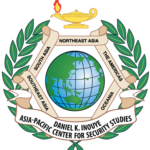India has always believed it could chart its own course. That belief, rooted in the bitter memory of empire and the long shadow of the Cold War, became policy: a refusal to join alliances, a conviction that true sovereignty meant standing apart. This was called strategic autonomy, and for a long time, it worked; at least in theory.
But doctrines don’t survive contact with reality unchanged. And over the past few years, reality has changed more quickly than most doctrines can keep up.
The facts are plain. Along its northern frontier, India faces a China that no longer pretends friendship. The deadly skirmishes at Galwan in 2020, and the continued troop build-ups that followed, did away with decades of diplomatic ritual. The idea that economic cooperation would soften military hostility proved hollow. China has redrawn the rules, and India now has to defend not just territory, but the assumptions that underpinned its foreign policy for decades.
To the west lies Pakistan. Familiar, dangerous, and unchanging. The conflict may smolder instead of burn, but it still demands attention and forces India to split its resources across two fronts. Meanwhile, the Indo-Pacific grows more unstable by the day. Naval standoffs, grey-zone warfare, cyber intrusions: none of it can be countered by standing alone.
And so, India has moved, cautiously but undeniably, toward the very partnerships it once kept at arm’s length. It signs logistics agreements with the United States, shares data with Australia, patrols with the French, and drills with the Japanese Navy. It participates in the Quad, cooperates on submarine technology, and buys weapons from all corners of the globe.
This pragmatic shift offers new avenues for integrated deterrence alongside powers like the United States, shaping the security landscape in unforeseen ways.
What India hasn’t done is call these alignments what they are: necessities. Instead, they’re cast as expressions of flexibility, described as “multi-alignment” or “issue-based cooperation.” The vocabulary avoids the word “alliance,” but the direction of travel is unmistakable.
Most nations adapt when the world becomes less forgiving. But in India’s case, the doctrine of strategic autonomy is not just a matter of policy, it is a matter of pride. It is tied to how the country sees itself: not as a follower, not as a junior partner, but as a pole in its own right.
That may still be possible. But not without cost.
To act independently in today’s world requires more than declarations. It requires capacity – military, economic, technological – and it requires clarity. India wants to lead in the Global South, partner with the West, maintain ties with Russia, and hedge against China. It wants, in short, to keep all doors open while the house is under siege.
This has led to a kind of polite ambiguity. India speaks of peace but prepares for war. It condemns Chinese aggression but won’t be drawn into blocs. It seeks technology from the U.S. while buying arms from Moscow. At some level, this is sensible. At another, it risks becoming a posture rather than a position.
The hard truth is that autonomy, if it is to mean anything, must be backed by strength. Not strength in slogans, but strength in systems: in logistics, surveillance, joint command, cyber defense. Without these, declarations of independence ring hollow.
India’s progress has not kept pace with other powers. China builds roads and airstrips at altitude. It tests drones and jammers. It works in silence, while India debates its doctrine.
There is, in all of this, a deeper question: not whether India should remain autonomous, but whether it still defines autonomy as standing apart, or standing prepared.
The coming years will test not just India’s resolve, but its reckoning with scale. It speaks of becoming a global power, of leading the Global South, of standing shoulder to shoulder with the world’s strongest. Yet its defense production remains slow, its military modernization uneven, and its strategic institutions prone to inertia. The ambitions are vast. The machinery to realise them is not.
There is a kind of national habit, easy to admire, harder to sustain, of believing that independence alone can substitute for power. But ambition without capacity is not autonomy. It is vulnerability dressed in principle. India wants to shape the world without being shaped by it. But power, in the end, is built, not claimed.
To insist on strategic autonomy in a world moving toward blocs and bifurcation is not in itself a mistake. But to do so while lacking the surveillance, the deterrents, the technology, and the readiness to act alone, that is a gamble. The danger is not that India aims too high. It is that it may mistake symbolism for substance, and pride for preparedness.
India’s reckoning with scale, and its evolving definition of autonomy, will help shape not only its own trajectory, but the collective ability of its partners to uphold a free and open Indo-Pacific.
If India is to walk alone, it must learn to carry more weight. Otherwise, the burden of autonomy may break its stride long before it reaches its destination.
Published: August 21, 2025
Category: Perspectives
Volume: 26 - 2025
Author: Shyam Tekwani





